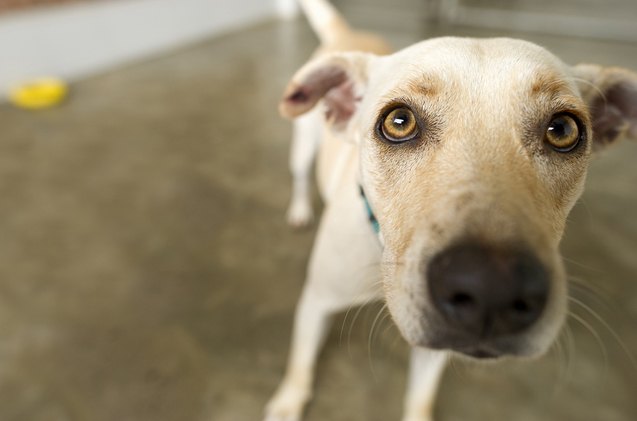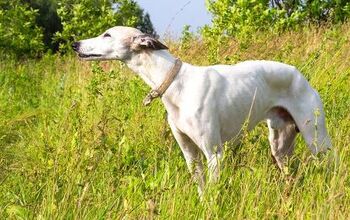What is Laryngeal Paralysis in Dogs?

Dogs love to eat – there is no doubt about it. But some dogs have a physical abnormality that not only makes it difficult to eat – it also makes it dangerous. Laryngeal paralysis is a condition in which the muscles controlling the larynx do not function properly, making it hard for your dog to breathe and increasing his risk for choking on food. Keep reading to learn more about this condition and what you can do to treat it.
Understanding Laryngeal Paralysis in Dogs
The larynx is also known as the voice box and it is made up of arytenoid cartilage and muscles that allow air to pass through the mouth or nose into the windpipe. Laryngeal paralysis is a condition in which the muscles and cartilage that open and close the larynx become weakened or damage, preventing the larynx from opening and closing properly. This can lead to problems with breathing and eating.
Related: What You Should Know About Pyruvate Kinase Deficiency in Dogs
This condition is most commonly seen in older dogs and it tends to affect larger breeds such as Golden Retrievers, Siberian Huskies, Saint Bernards, and Labrador Retrievers. In many cases, the larynx is properly formed at birth but the nerves and muscles that control the cartilage lose function over time.
A less common form of laryngeal paralysis is one that occurs as a hereditary condition in puppies. In most cases, affected puppies will develop signs of breathing problems between 2 and 6 months of age. These puppies typically have trouble breathing and swallowing – they may also have a strange-sounding bark.
The breeds most likely to develop this type of laryngeal paralysis include English Bulldogs, Dalmatians, Siberian Huskies, and Bouvier des Flandres. This condition can also develop as a result of trauma to the larynx by a bite or other wound. The most common symptoms of laryngeal paralysis include change in the dog’s voice, a hoarse-sounding bark, noisy breathing, and gaging or choking during eating. Symptoms often get worse in hot and humid weather and during exercise.
What is the Best Treatment for Laryngeal Paralysis?
Laryngeal paralysis is a serious condition and it is not one that will go away on its own. In most cases, the only treatment option for laryngeal paralysis is surgery. The most common procedure used to correct the issue is called an arytenoid lateralization and it involves placing sutures to hold the arytenoid cartilage open, allowing air to pass through. These sutures are permanent and the procedure is very safe.
Related: What Is von Willebrand in Dogs?
There is, however, a small risk for bleeding during the surgery as well as a small risk for aspiration of stomach contents. After the surgery, there is also a small risk for aspiration of food and water. In most cases, however, the sutures are only placed on one side which helps to increase airflow while limiting the risk for aspiration.
Because laryngeal paralysis can lead to life-threatening complications, it is not a condition that should be ignored. If you suspect that your dog is suffering from this issue, you should seek immediate veterinary attention. Your vet will be able to make an accurate diagnosis and to recommend a course of treatment, should one be necessary.

Kate Barrington is the loving owner of two cats (Bagel and Munchkin) and a noisy herd of guinea pigs. Having grown up with golden retrievers, Kate has a great deal of experience with dogs but labels herself a lover of all pets. Having received a Bachelor's degree in English, Kate has combined her love for pets and her passion for writing to create her own freelance writing business, specializing in the pet niche.
More by Kate Barrington























